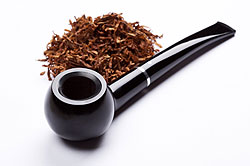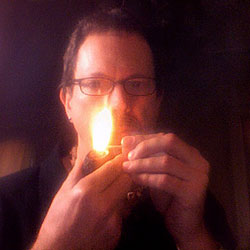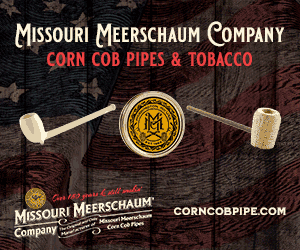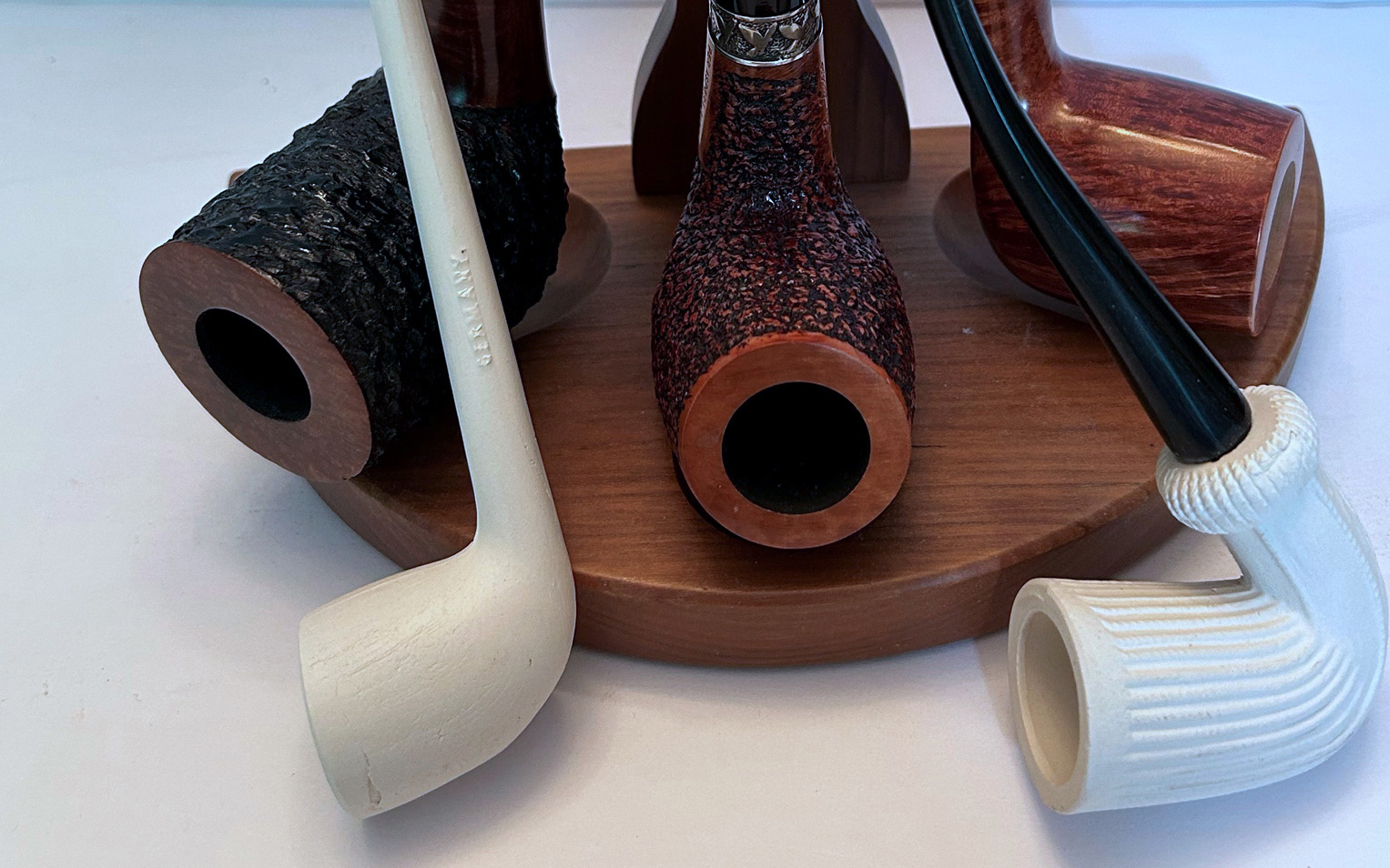G. L. Pease
 Really, it’s just volume 16, but I couldn’t remember whether I usually put “volume,” or “vol.” or “edition” in the title, and was too lazy to look, so I stole from the Duck’s Breath Mystery Theatre’s Ask Doctor Science radio show. Of course, I know that all of my erudite readers are well acquainted with Doctor Science and Duck’s Breath, and therefore, immediately grokked the reference. In the unlikely event you are not familiar with Duck’s Breath, check them out on YouT00b or similar. They’re often pretty funny, and may even be more entertaining than reading this.
Really, it’s just volume 16, but I couldn’t remember whether I usually put “volume,” or “vol.” or “edition” in the title, and was too lazy to look, so I stole from the Duck’s Breath Mystery Theatre’s Ask Doctor Science radio show. Of course, I know that all of my erudite readers are well acquainted with Doctor Science and Duck’s Breath, and therefore, immediately grokked the reference. In the unlikely event you are not familiar with Duck’s Breath, check them out on YouT00b or similar. They’re often pretty funny, and may even be more entertaining than reading this.
Anyway, just breaking into the Qs and As has always seemed somehow too abrupt, so I usually try to find some gentle ramp on which to cruise the reader up into the rarified air of the always serious, deeply intellectual stuff that falls between the introduction and the closing paragraph where I ask that you send in more questions. In other words, it’s sort of a way to suck you towards the event horizon of the temporal black hole that follows.
So, as we prepare to submerge into the inky depths of one more set of intractable questions, along with my brilliantly composed answers consisting of compound sentences containing florid, often anachronistic prose, words randomly chosen from the myriad entries in my worn, gilt-edged and leather-bound thesaurus[1], combined into syntactic constructs that very few readers younger than Charles Dickens are likely to find colloquial, in a dazzling attempt to dumfound (that just means astonish or amaze, by the way, not befuddle) the reader, just remember: I have a Masters Degree … in Tobacco.[2]
From HR: You have reluctantly admitted in the past that a few of your blends are at least an Homage to an old favorite, Westminster being the best known, as a “close relative” to the old Dunhill London Mixture. You’ve also let slip that we should at least find some similarities between Blackpoint and Balkan Sobranie 759, between Chelsea Morning and Dunhill Early Morning Pipe, between Maltese Falcon and Raven’s Wing, between Sextant and Mephisto, and there is a rumor that Quiet Nights may be an illegitimate cousin to Dunhill Nightcap.
We do understand that the very instant you admit to any relationships between old and new blends, (whether they may or may not be conceived “out of wedlock,” and depending on just how similar they may be) any number of self-proclaimed experts will start howling “foul.” Please ignore them. Inquiring minds want to know: what other “similarities” do you find, whether by design or accident?
And, having read that you received a few unopened tins of Sullivan Powell’s Gentleman’s Mixture in 2009, we all are dying to know if you have anything you’d like to reveal regarding that fine old mixture.
 A: Whilst I will openly admit guilt when it comes to Westminster’s genesis as an attempted recreation of some very old London Mixture, I’ll say, in my defense, that though there are similarities between some of my blends and the classics of yore, these similarities are merely borne out of the inspiration smoking those old blends offered. I sometimes refer to these as impressionistic paintings of my own experiences with the blends, but not as attempts to recreate them. Take Blackpoint, for instance. It came from a specific experience with a specific, very old cutter-top tin of 759. The tobacco in that tin was sublime. And it was unique. It was unlike any other 759 I’d ever smoked, and I found it deeply resonant. I wanted to construct something that would at least trigger memories of that experience for me, whilst also being a solid, well balanced mixture in its own right. Because it was my own singular experience, I can say that goal was achieved, but at the same time, I hope the result communicates something of that experience to others.
A: Whilst I will openly admit guilt when it comes to Westminster’s genesis as an attempted recreation of some very old London Mixture, I’ll say, in my defense, that though there are similarities between some of my blends and the classics of yore, these similarities are merely borne out of the inspiration smoking those old blends offered. I sometimes refer to these as impressionistic paintings of my own experiences with the blends, but not as attempts to recreate them. Take Blackpoint, for instance. It came from a specific experience with a specific, very old cutter-top tin of 759. The tobacco in that tin was sublime. And it was unique. It was unlike any other 759 I’d ever smoked, and I found it deeply resonant. I wanted to construct something that would at least trigger memories of that experience for me, whilst also being a solid, well balanced mixture in its own right. Because it was my own singular experience, I can say that goal was achieved, but at the same time, I hope the result communicates something of that experience to others.
You’re absolutely right that explicitly making comparisons opens the floodgates for naysayers. Fact is, I’m usually one of those naysayers, and often, to the chagrin of the clone’s cheerleaders, a pretty vocal one. I have yet to try any replica of an old blend that hits the bullseye, or even really comes close, and even with my own dalliance with the Westminster experiment, it seems to me to be little more than enjoyable folly. Sure, some great blends emerge from the process, but they certainly can’t, and arguably shouldn’t be passed off as replicas, even in those cases, and perhaps especially so, when they bear the same names as the originals.
The whole idea of the so-called “cloning” of tobacco drives me a little pear shaped. Copies will always fall short of the mark, and necessarily so. It is impossible to recreate in a new mixture the qualities that are extant in one that’s been cooking in its own juices for decades. Even if the exact same leaf is combined in the same proportions, using precisely the same methods of toasting, panning, blending, pressing, slicing and so on, the results would be very different. All anyone could rightly compare this new mixture with is their memories of the old one when it was young and fresh, and those memories are both fallible and malleable under the relentless hammer of time. When you add the complicating condition that tobacco, as an agricultural product, will necessarily change over the generations due to soil changes, climate changes, differences in cultivation methodology, and so on, any hope of genuine re-creation is dashed. For that matter, even if yesterday’s mixture has been kept in constant production throughout the years, it would have evolved and changed, as well. So, the best we can really hope for is a sort of guided reminiscence.
 We pipesters seem to love nostalgia. I wonder if we sometimes like old blends simply because they’re old, or unobtainable, or otherwise perceived as precious, and that if we were to smoke them more objectively, we might sometimes find them lacking. Not all mixtures will stand up to the rigors of aging, and, to confound things, there are a great many uncontrollable variables in that very process. Differences in storage, for instance, can, in the short term have small effects, but over the decades, those effects are amplified to the point where two identical tins, aged for an identical length of time by two different smokers, might be remarkably different from one another. But, they can trigger memories of smokes past, (reminiscences), in itself a Good Thing, and that’s probably enough. Hence, my nearly steadfast M.O. of drawing inspiration from the past, but then working to create not copies, but interpretive works in my own style.
We pipesters seem to love nostalgia. I wonder if we sometimes like old blends simply because they’re old, or unobtainable, or otherwise perceived as precious, and that if we were to smoke them more objectively, we might sometimes find them lacking. Not all mixtures will stand up to the rigors of aging, and, to confound things, there are a great many uncontrollable variables in that very process. Differences in storage, for instance, can, in the short term have small effects, but over the decades, those effects are amplified to the point where two identical tins, aged for an identical length of time by two different smokers, might be remarkably different from one another. But, they can trigger memories of smokes past, (reminiscences), in itself a Good Thing, and that’s probably enough. Hence, my nearly steadfast M.O. of drawing inspiration from the past, but then working to create not copies, but interpretive works in my own style.
As for Gentleman’s Mixture, the Sobranie produced version was rather different from the Gallaher produced version (a familiar story?), but I’ve been told by a few puffers that Ashbury is somewhat reminiscent.
From Bill: I frequently smoke virginia and usually love the feel and taste of the smoke. On occasion, the same tobacco will taste very bitter and almost burnt. Is the foul taste a result of smoking to aggressively and burning the tobacco? Additionally, once the smoke goes bad there is no recovery?
A: There are many variables to consider, and virginia can be a somewhat unforgiving mistress. First, not all virginias are equal. There are wide variations in nicotine content, sugar content, the amount of organic acids and nitrogen compounds remaining in the leaf after curing, how long it was fermented, whether or not it was cased, or pressed, what it was blended with, and so on. Then, how the pipe is packed, how it’s lit, how rapidly it’s puffed, and how clean the shank is kept can have a dramatic influence on the final smoke.
Bitterness often results from a tobacco with moderate sugar levels being smoked too hot. The greatest sweetness results from smoking very slowly, just barely keeping the ember going, and drawing the smoke through the unburned tobacco delicately so that the moisture in the smoke stream can carry some of the unburned sugars along to the smoker resulting in a sweeter smoke. Smoking faster can cause that sweetness to give way to a brasher, more acrid taste that can, to some, be irritating to the mouth, and to others, can be bitter. And, yes, depending on how hot things get, it can negatively affect the rest of the smoke. No recovery.
I’ve also found that a clean shank results in a sweeter smoke. Some of the distillates that form from combustion and condensation are pretty disagreeable. The shank’s job in this regard is crucial. It carries the smoke, clings to some nasty stuff, and, importantly, actually imparts some flavour along the way. A shank whose airway is fouled with tars can’t do its job very well, at best, and, at worst, can really foul the smoke. This gets worse as the smoke progresses and the accumulated tars soften from the heat and moisture, and those nasty volatiles find their way to your taste buds.
 I used to have a nearly obsessive cleaning ritual after I’d finished a pipe. I’d run a couple cleaners through, then disassemble the thing, and scrub the shank with doubled-up cleaners until they emerged as white as they were when they went in. Then, I’d leave a cleaner in overnight to absorb any additional moisture that condensated as the pipe cooled. Somewhere along the way, I stopped doing this, and it didn’t take long for my most frequently smoked pipes to suffer from the abstinence of my previous compulsive ministrations. But, with the application of a few pipe cleaners, a little alcohol (Everclear for the pipe, whisky for me), I was once again rewarded with sweet smokes. This is likely the purpose behind some of the “Pipe Sweeteners” that were marketed in the heyday, when every adult male in the known universe smoked a pipe. I’m not quite as fastidious as I used to be, but having learnt my lesson, I do keep up with the maintenance, and my pipes have thanked me for it. [Related: Routine Tobacco Pipe Cleaning (With Videos)]
I used to have a nearly obsessive cleaning ritual after I’d finished a pipe. I’d run a couple cleaners through, then disassemble the thing, and scrub the shank with doubled-up cleaners until they emerged as white as they were when they went in. Then, I’d leave a cleaner in overnight to absorb any additional moisture that condensated as the pipe cooled. Somewhere along the way, I stopped doing this, and it didn’t take long for my most frequently smoked pipes to suffer from the abstinence of my previous compulsive ministrations. But, with the application of a few pipe cleaners, a little alcohol (Everclear for the pipe, whisky for me), I was once again rewarded with sweet smokes. This is likely the purpose behind some of the “Pipe Sweeteners” that were marketed in the heyday, when every adult male in the known universe smoked a pipe. I’m not quite as fastidious as I used to be, but having learnt my lesson, I do keep up with the maintenance, and my pipes have thanked me for it. [Related: Routine Tobacco Pipe Cleaning (With Videos)]
So, give them a good cleaning, try changing your smoking cadence, experiment with packing a little tighter or looser, and see if the problem rights itself. Let us know how it goes. And, anyone who has other advice for Bill, leave a comment so we can all learn from the collective experience.
Andrew writes: Greetings again. After some thought, I devised another question. How often, if at all, do you inhale while smoking a pipe? Thank you.
A: In general, Andrew, I inhale about as often as I exhale. I’ve found it conducive to the continuation of life so that I can enjoy my pipes for as long as possible. To the best of my knowledge, very few are able to survive long at all without inhaling regularly, so even when smoking a pipe, I try at all times to breathe.
Kidding aside, for me, the pleasure of pipe smoke is in its flavour and aroma, two things the lungs do little to enhance. I know there are pipe smokers who do inhale pipe smoke, but I’m not amongst them. I’ve tried it a couple times, but my body’s reaction was, shall we say, hostile to the experience. Of course, it’s inevitable that some amount of smoke will be breathed during smoking, but I try to keep it to a minimum. Truth is, I am such a lightweight when it comes to nicotine, inhaling would likely render me comatose, or at least gibbering and delirious, and would probably give me an incurable case of the munchies as an after effect. So, just like Bill Clinton, I don’t inhale.
That’s it for this edition. Keep those cards and letters coming.
-glp
NOTES:
1. I’m kidding. My thesaurus is neither leather bound nor gilded.
2. I’m kidding. There’s no such thing as a Masters Degree in tobacco. I am, however, as explained in a previous edition, a Certified Master of the Universe.
SUBMIT QUESTIONS HERE
 Since 1999, Gregory L. Pease has been the principal alchemist behind the blends of G.L. Pease Artisanal Tobaccos. He’s been a passionate pipeman since his university days, having cut his pipe teeth at the now extinct Drucquer & Sons Tobacconist in Berkeley, California. Greg is also author of The Briar & Leaf Chronicles, a photographer, recovering computer scientist, sometimes chef, and creator of The Epicure’s Asylum. See our interview with G. L. Pease here. |















An enjoyable read.
My method for pipe cleaning is to definitely run cleaners thru once the bowl is consumed. I do not like to remove the stem from the shank very often, but after every bowl I run alcohol soaked cleaners thru until they come out clean. This method has worked fine for many years. I use denatured alcohol and then let the pipe sit for a day after cleaning. I probably could get away with not cleaning them so much, but it works for me and I have not had a pipe go bad on me yet.
And thank you again, MOTU (Master of the Universe) for the Brilliantine answers.
Hey, that’s CERTIFIED MOTU.
CMOTU looks too Russian like
Great read, thanks!
Bahaha, this makes me want to smoke a bowl. Great read as always.
http://i.imgur.com/Um9Qas.jpg
Last month you addressed my question about the maker of my shop pipe. The stamping on the Campus Smoke Shop are:
Top of shank: CAMPANILE (in italics)
Bottom of shank: NATURAL GRAIN over 255
It is a nice straight grain about group 3 in size.
Thanks.
Great job Greg, One of my favorite features on PM!
Have you or any of your readers ever used witch hazel to clean the stem and shank of a pipe? If so, were the results positive or negative?